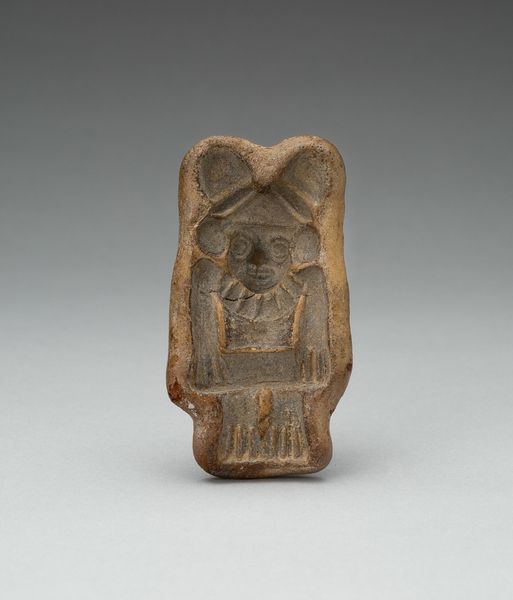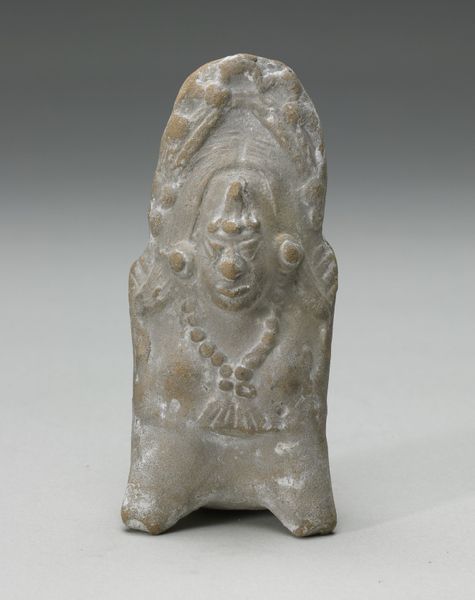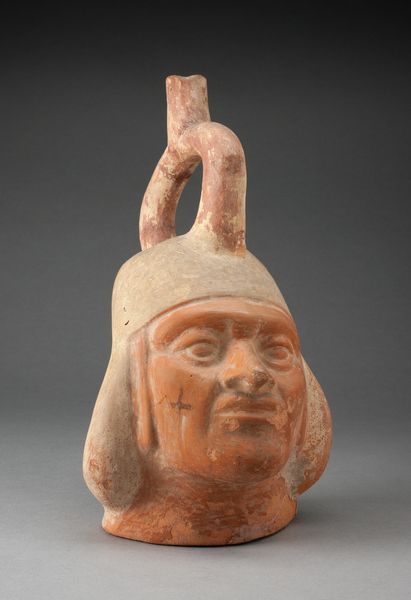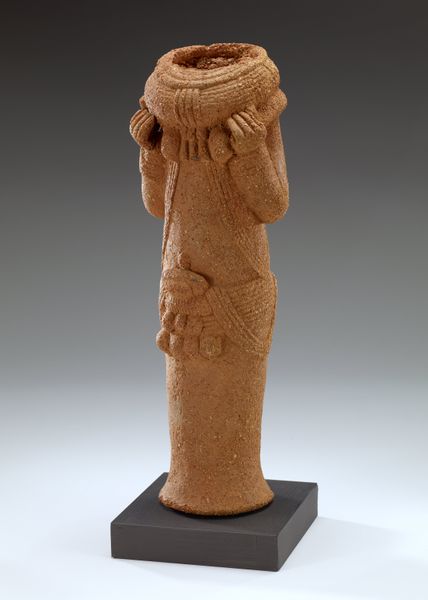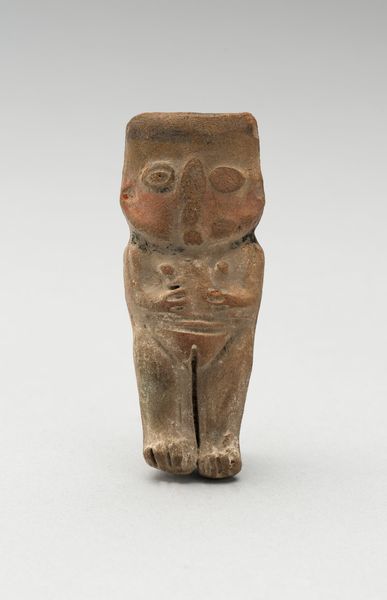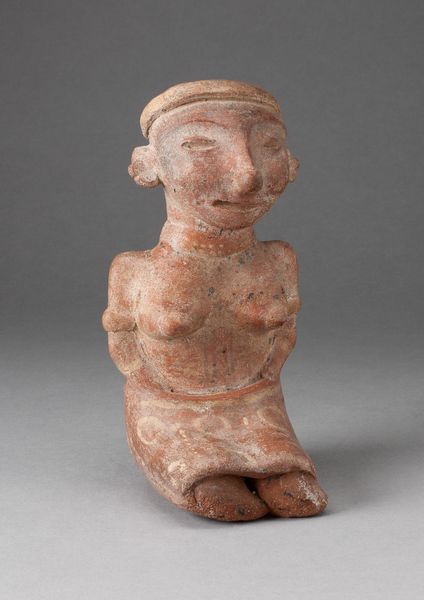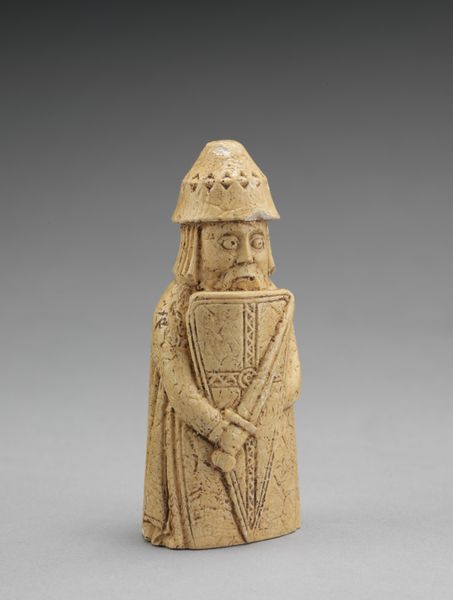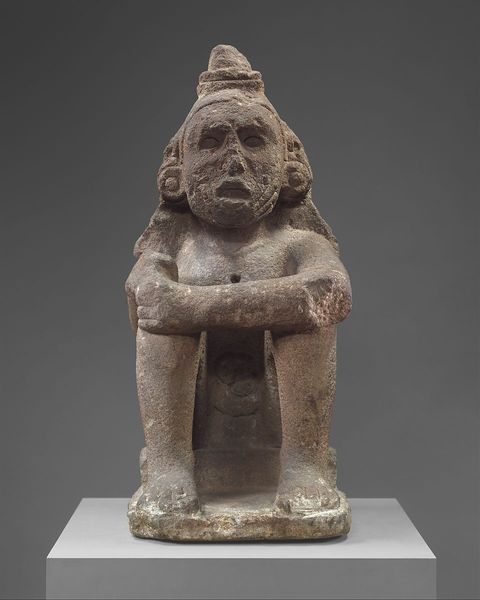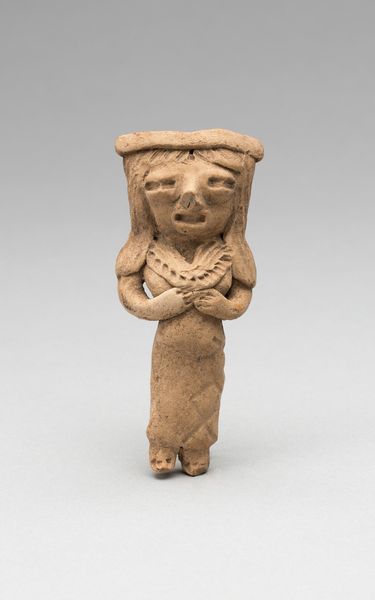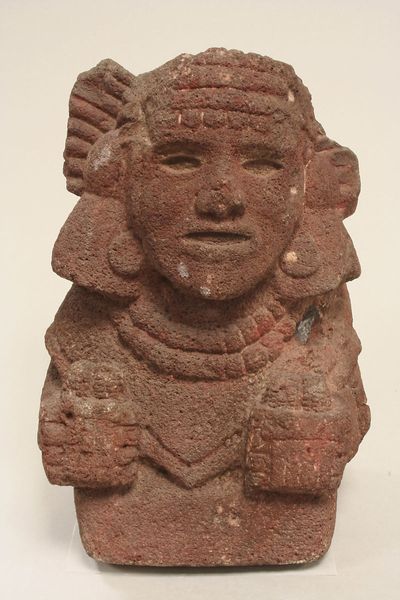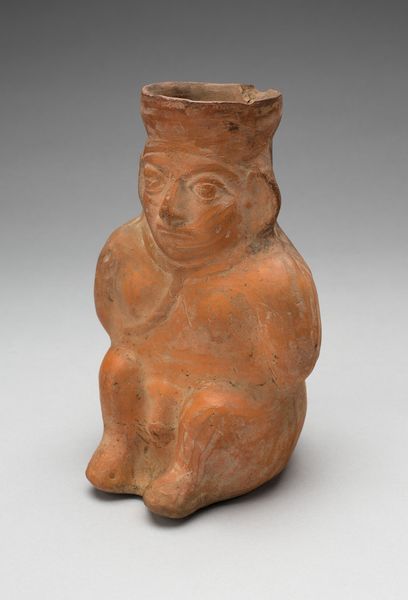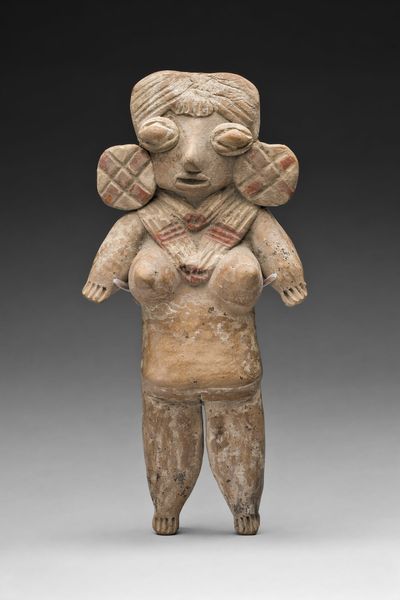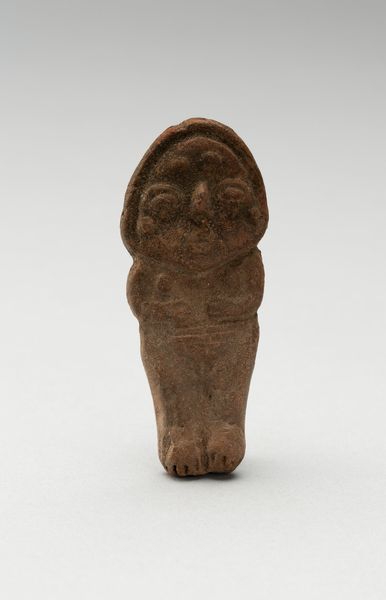
ceramic, sculpture, terracotta
#
ceramic
#
figuration
#
coloured pencil
#
sculpture
#
terracotta
#
indigenous-americas
Copyright: Public Domain
Editor: This ceramic sculpture, created sometime between 501 and 900, immediately strikes me with its quiet dignity. What’s your take, what do you see? Curator: Oh, I feel that dignity too. This figure, so carefully molded from earth, almost whispers a secret – a connection to the past, to ancestors, to beliefs we can only glimpse now. Look at the hands clasped so deliberately – is it prayer, a humble offering, or a gesture of self-containment? Maybe all three. It invites meditation, don't you think? I find myself wondering what kind of ceremonies it participated in. Editor: That's beautiful, especially thinking about it being an offering or part of a ritual. It's hard to imagine, isn't it? The sculpture itself seems so fragile. Does the material - the ceramic - tell us anything about the Maya people's relationship with the land, or with time? Curator: Precisely. Ceramic endures. This sculpture made centuries ago stands as evidence, like fossilized thought. Clay *is* the earth. Their hands literally shaped their beliefs and world into being. It grounds you, doesn’t it? Knowing the very material is so intimately connected to their world, their everyday experience? It's not some rare mineral or imported material. What feelings did it stir in you? Editor: A sense of intimacy, I think. Like touching the past. Thanks to your perspective, it does feel more personal now. I keep wondering, though: whose face did this embody? Curator: An interesting question, that. It certainly provokes our curiosities. Next time, perhaps we can bring our intuitions together and consider how we can respond through the work as if these voices belong to us.
Comments
minneapolisinstituteofart almost 2 years ago
⋮
Both men and women wore wraparound hipcloths or skirts. These garments were woven in long pieces, stitched together as they came off the loom, and wrapped and draped in elaborate folds around the body. Excess material hung from the waist, as seen here, or was dramatically flung over the shoulder. Women covered their torsos in similar lengths of wraparound fabric or wore long, geometrically-patterned tunics similar to contemporary Mayan huipiles, examples of which are on view in this gallery. Headdresses were also part of a woman's ceremonial attire and were extremely diverse, ranging from simple headbands to tall, feathered or furred ensembles. This figure is shown wearing a large tzute draped over her head, ear spools, bracelets, and a prominent string of beads. Such jewelry was most likely made from jade, suggesting this figure represents a Mayan woman of high status.
Join the conversation
Join millions of artists and users on Artera today and experience the ultimate creative platform.
